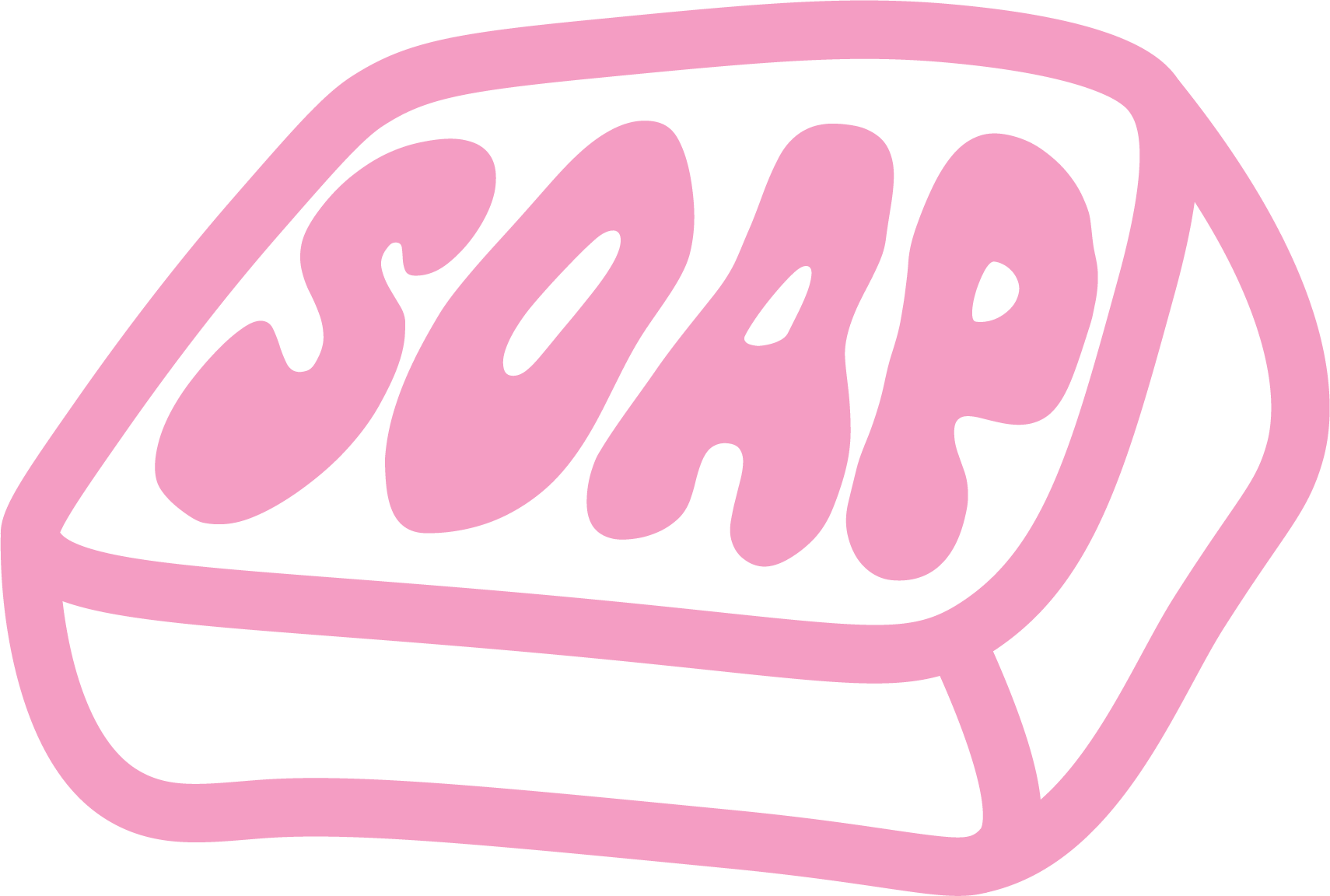Do you ever meet someone and think, “Damn, I wish there were more people in the world like you”?
People who are conscious, caring, and effortlessly cool—
whose story you just can’t get enough of.
Enter Igo & Maru.
In a sleepy fishing town on the northeastern coast of Brazil, nestled among swaying banana leaves and a turquoise lagoon that reveals sandy oases as the tides rise and fall, I had the pleasure of crossing paths with this creative duo.
Perched on a bar stool in the airy, open-concept main room of the white villa they call home—an architectural wet dream—and swaying to João Gilberto’s O Pato spinning on vinyl, I was enthralled by the world they lived in. From the vibrant streets of São Paulo and Buenos Aires to the slow, hypnotic rhythms of Tibau, Igor and Marina offer a glimpse into how artistry flows when borders blur and new ambitions endlessly emerge.
Over the last decade, the couple has created and conceptualised in more ways than I imagined possible. As our conversation meandered through transnational connections and cultural aesthetics, I couldn’t help but ask if I could share a glimpse of their lives with SOAP.
Humbled and delighted, they agreed.
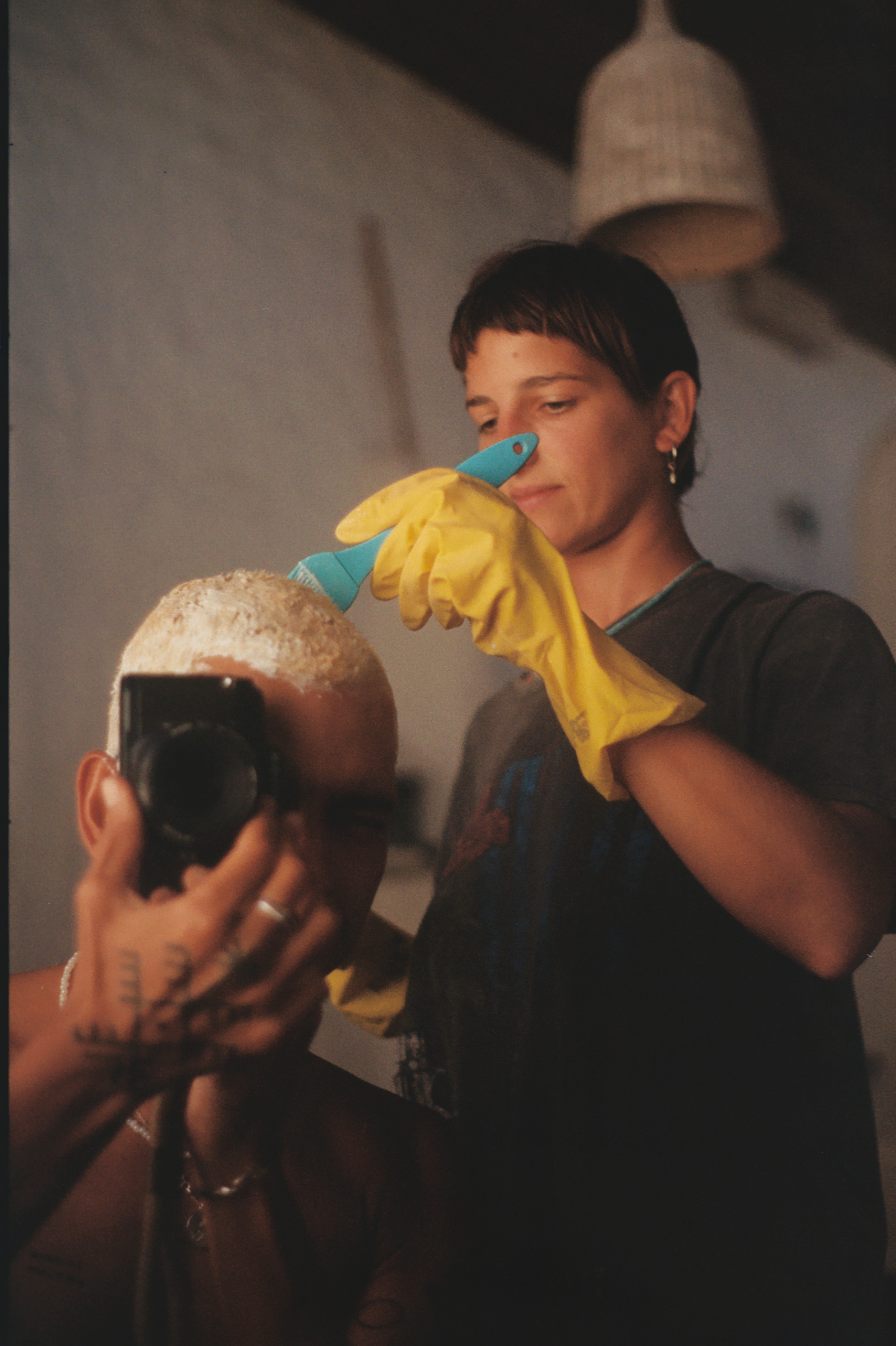
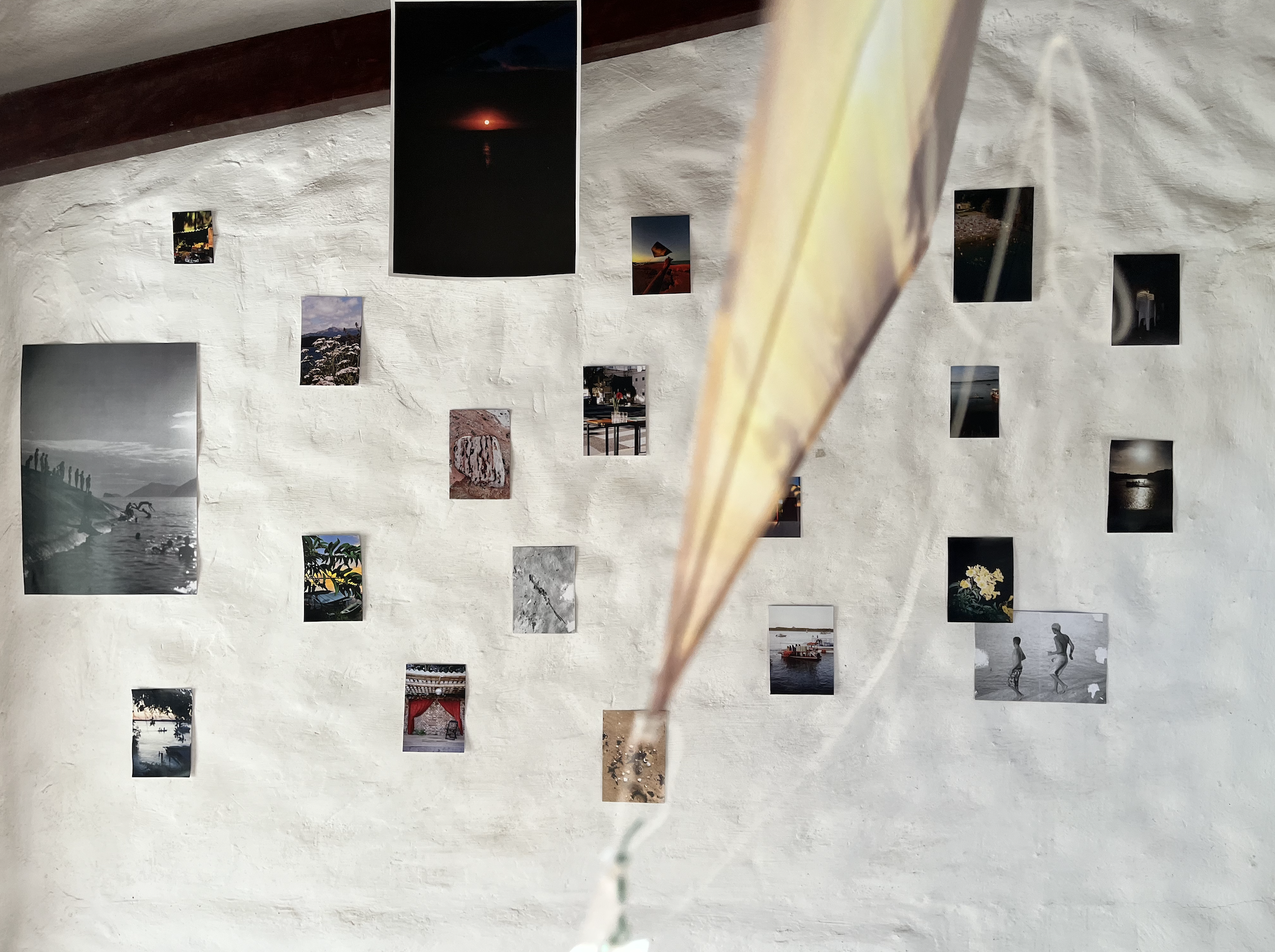
IGO: I recently heard about a guy that I'm now obsessed with —Rick Rubin— and he said something that I really relate to. He said:
“I'm always searching for a creative puzzle” - that's my life.
I think that’s more the reality than calling myself an “artist”. I'm always searching for new creative puzzles... That can even be looking for things to change in our home. We're always very decorated. I like to find new ways to change the space. I think everything we do is creative.
I’m curious how moving to the small village of Tibau has shifted things in your creative processes, versus how things were when you were living in big cities like São Paulo and Buenos Aires.
MARU: I think for me the biggest change is the aspect of nature, how quiet it is, the pace of life… It's quite the opposite of the city… in every way, really.
We also have a healthy lifestyle here. Everything is more organised; we do a ton of exercise, we surf and eat well—we have a routine. And then there are times when we’re doing nothing. I feel this gives us more freedom and time to create.
IGO: For me, it's a bit different because my mind is quieter here. I need to go to the big city and be overwhelmed. I need this, but not too much of it. Just the right amount, and then I can come back here. When I return, it's like, “Okay, quiet again, now I can work.“
I am inspired here by nature too, but I think my favourite ideas and art projects start in big cities, being inspired by museums, other artists, sambas and so on.
MARU: And sometimes being here I ask myself “Will people value the work?”.
If we do an exhibition here, will people be interested? Some time ago, we wanted to do a small music and culture festival here, but we realised that people don’t want that at all. We asked their opinions on the idea, and they told us directly, “No”.
Does that feel restrictive or because of mediums like the internet, the way we can showcase everything virtually, do you feel like it doesn't limit you?
MARU: I think we have to think of other ways to showcase our work. For it to be way less restrictive. It’s another puzzle.
Igo, think of the kites.
IGO: Yeah - the kites! It's a project that started the whole idea of how to show our work in new ways. I'm a photographer. So naturally, I want to do a photo book. But everybody's doing a photo book, so why am I doing it too?
MARU: And who’s going to buy it? Other creatives with money? Just people in the same bubble.
And I remember you said “I want to do an exhibition. But where?”.
We wanted it to be like an intervention in a public space. Flying a bunch of kites with your photography on them… Art for everyone, you know.
![]()
IGO: I wanted to print more kites and give them to the local people: make it a big event - everybody invited to the Chapadão [cliffs overlooking the ocean] to fly kites together.
MARU: And who’s going to buy it? Other creatives with money? Just people in the same bubble.
And I remember you said “I want to do an exhibition. But where?”.
We wanted it to be like an intervention in a public space. Flying a bunch of kites with your photography on them… Art for everyone, you know.
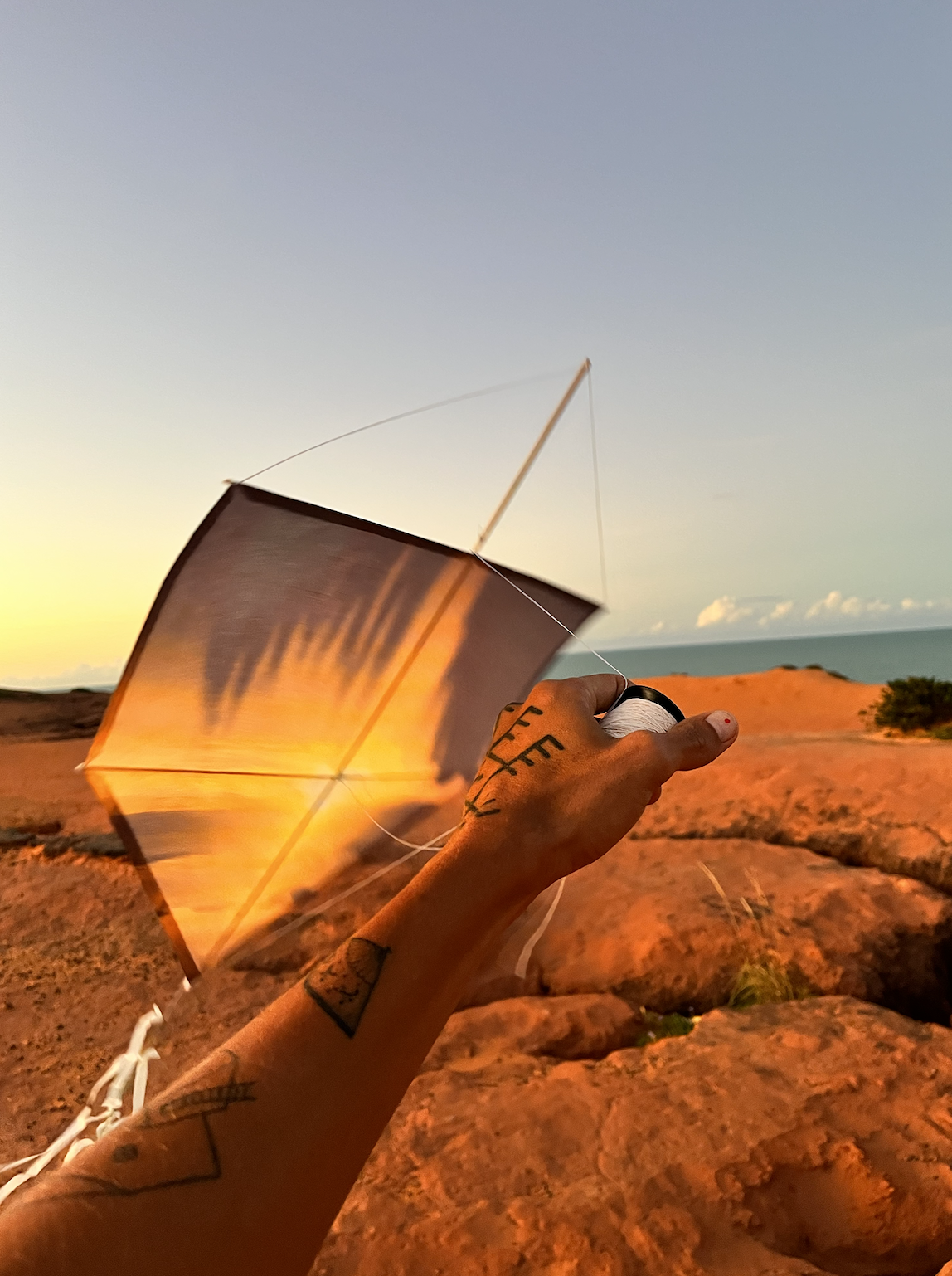
So, naturally, where you're based influences what you create and how you choose to share it?
IGO: Yes! Plus, it’s not just any photos we’re sharing. They’re photos from here, from Tibau.
It’s the same with the house nearby where photos are currently pasted – it’s where the fishermen keep their stuff. The photos are of local men in their boats, and they were taken on this water… (points outside toward the river)
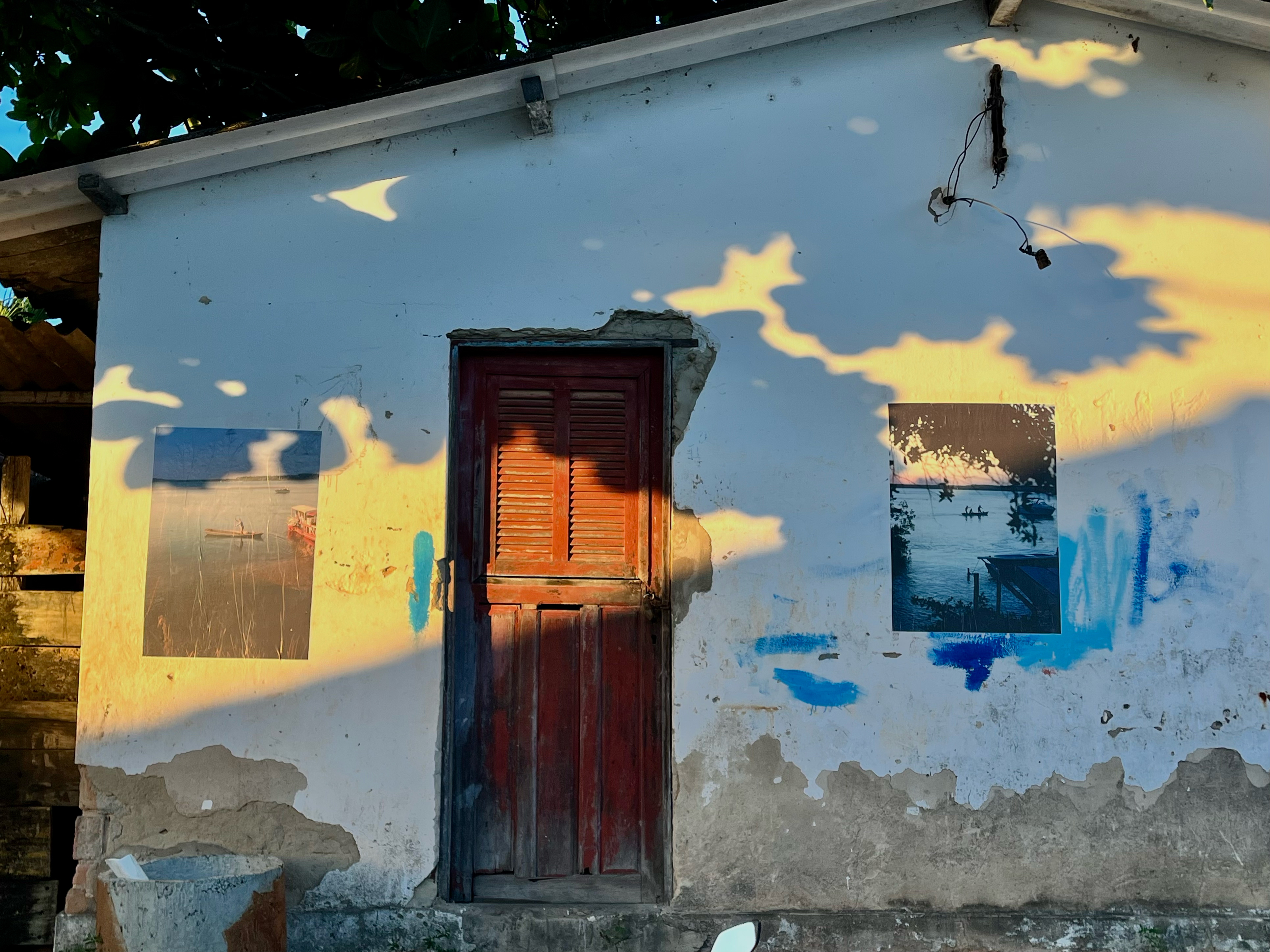
What does aesthetic mean to you from the perspective of self-expression? I’m currently thinking about how stylish you two are. (laughs)
IGO: Let me tell you the reason; the reason is we live in 30-degree weather all year.
It’s so hot that we can barely wear anything. But if the chance comes to put some clothes on, you will see how fashionable I can be. (all laughing)
No, but actually, for me, I started with words, so visual aesthetics came later.
Now it's a mix of the two, and I feel it's in everything I do. I buy certain wines because of the label. I buy records I don’t know if the cover is visually intriguing, and so on.


I appreciate your transparency. A lot of people pretend that this factor doesn’t have a huge influence on why they’re attracted to certain things and not others.
To me, it sounds like the emotional appeal of aesthetics.
To me, it sounds like the emotional appeal of aesthetics.
IGO: Yes, 100%. Last week we were talking about buying a second-hand surfboard and the board works well but it's horrible. (laughs) It's so horrible looking - I can’t ride this board (all laugh).
MARU: I was talking to a friend of mine from here and she didn’t know what I do for a living, but she said “Let’s work together; I trust you because I like your style”. I was a bit caught off guard because she hadn’t seen my portfolio and didn’t know my professional work, but she knew me as a person, and I guess that was enough… It’s like you’re breathing it; your identity comes through in whatever you’re doing.
IGO: Yeah, exactly. And it’s kind of crazy because in my mind the concept of aesthetics had always been associated with this idea of a whole production. But for me, I’m drawn to the ordinary things. Ordinary things presented in a way you’ve never seen before… I think that’s my path as a photographer, as an “artist”. I want to show ordinary things in a way that you’ve never seen.
MARU: I feel we’ve trained our vision for some time. That's why it feels right when you're taking that photo or when you see something that just makes sense to you.
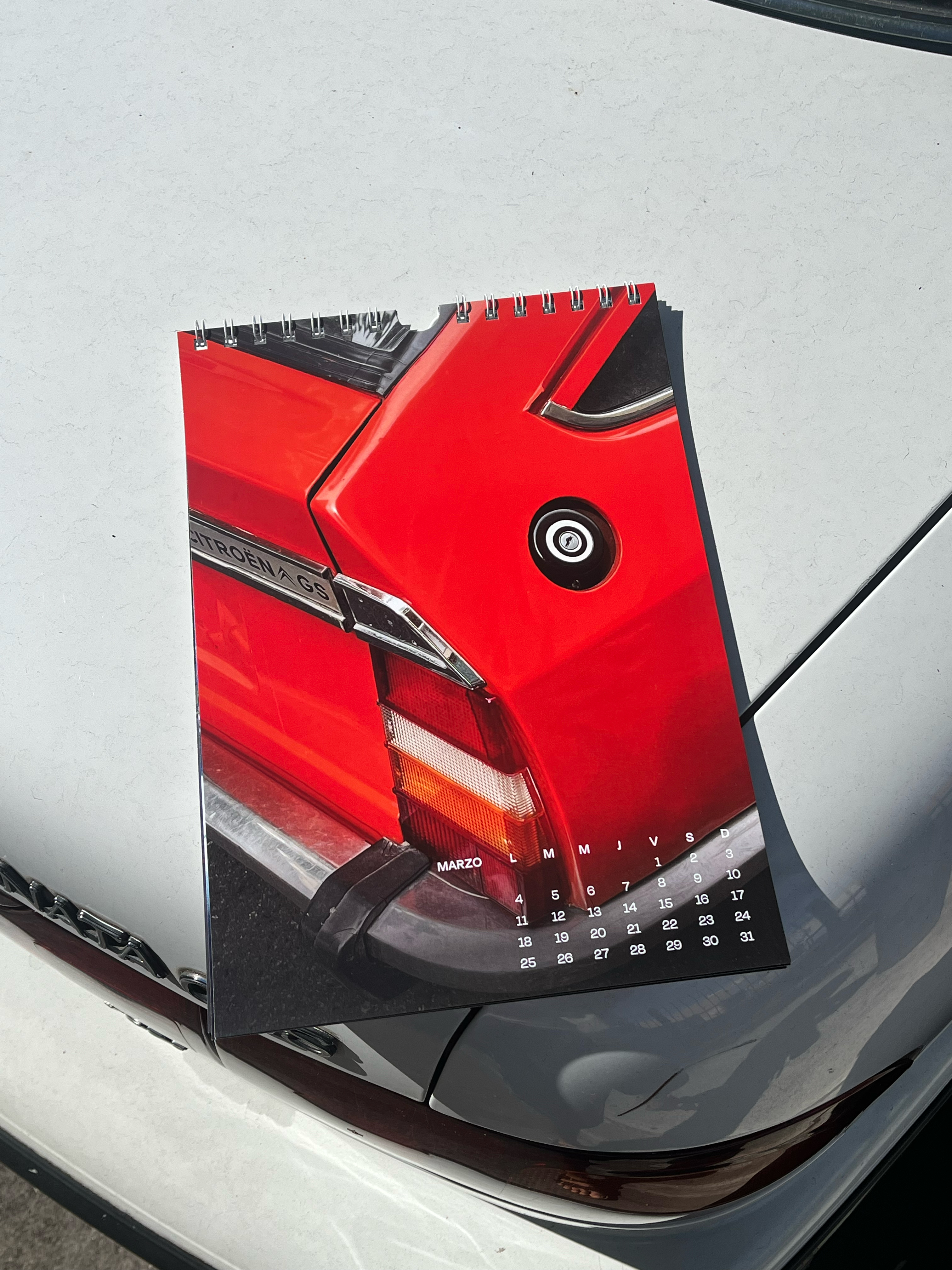
Going back to the question of identity through fashion, how do you relate to self-expression through aesthetic choices in what you wear?
MARU: I think it’s all about identity, like how you show yourself to the world.
It's not all about the clothing either. So many choices like choosing to wear makeup or not, or what hair accessories you style with, small touches through jewellery, the tattoos you have and so on.
I used to be more self-conscious of that in the city. Here, I don't bother as much, but now we’re thinking about it a bit differently, in the form of fashion projects! We’re thinking about making merch from Tibau, and we also thought about printing Igo's photos on vintage pieces. Trying to use a different printing process as well; something more experimental. We have a lot of plans. (laughs)
It sounds like you have the luxury of doing so here. Without the constraints and pressures of the city, you’re more liberated to create as you please!
MARU: There’s definitely more freedom to play around.
IGO: I think it’s similar to the time we went to Qatar. It was funny because I'm Brazilian and I was going to go see Argentina play a high level match. But I love Argentina, I love Argentinian football and I also have a creative partner who shares my love for fashion. And immediately we decided we needed to make a jersey to wear in Qatar. We wanted to base it on upcycling and the idea was to pick three different Argentinian jerseys - two that Argentinians wore when they won in the past, and the one they wear now to create a totally new one. And it was incredible.
Argentinian people are very superstitious and the conceptualising of the jersey was based around that superstition. We wanted to create something that represented the past and what would be coming.
![]()
IGO: I think it’s similar to the time we went to Qatar. It was funny because I'm Brazilian and I was going to go see Argentina play a high level match. But I love Argentina, I love Argentinian football and I also have a creative partner who shares my love for fashion. And immediately we decided we needed to make a jersey to wear in Qatar. We wanted to base it on upcycling and the idea was to pick three different Argentinian jerseys - two that Argentinians wore when they won in the past, and the one they wear now to create a totally new one. And it was incredible.
Argentinian people are very superstitious and the conceptualising of the jersey was based around that superstition. We wanted to create something that represented the past and what would be coming.

I love the concept - that’s so creative!
Maru, you’ve been in and around the world of fashion for sometime too.
What has that journey looked like for you?
You mentioned some upcycling projects currently in the works?
Maru, you’ve been in and around the world of fashion for sometime too.
What has that journey looked like for you?
You mentioned some upcycling projects currently in the works?
MARU: I’d say my interest in fashion started in highschool. It’s a major time of self-discovery and not having a mandatory school uniform gave me the opportunity to express my personality through my style. I started thrifting all kinds of vintage pieces and customising them with the help of a Singer sewing machine I inherited from my grandma.
For me, there was definitely emphasis on being unique and wearing something no one else had, which meant I spent a lot of time experimenting with upcycling. When I started university, I actually began studying fashion design, but within the first semester moved to graphic design.
But it’s funny how my work found its way back to fashion. I’ve had the privilege of doing freelance work in branding for different clothing companies, like Ola, IUJU, and Farm, and they all have a focus on creative and meaningful solutions for different ethical issues. I like to think that all the work I do is linked to the things I’m naturally drawn to.
![]()
Now that my work is all remote, I like dedicating time to doing craft experiments. Living in Tibau also means not having all the materials you’d easily find in the city, but sometimes constraints like these fuel creativity… like using vintage clothing as a canvas for hand-made photo transfers and freehand painting–a project we’re working on as we speak!
For me, there was definitely emphasis on being unique and wearing something no one else had, which meant I spent a lot of time experimenting with upcycling. When I started university, I actually began studying fashion design, but within the first semester moved to graphic design.
But it’s funny how my work found its way back to fashion. I’ve had the privilege of doing freelance work in branding for different clothing companies, like Ola, IUJU, and Farm, and they all have a focus on creative and meaningful solutions for different ethical issues. I like to think that all the work I do is linked to the things I’m naturally drawn to.
I’m curious about how your cultural backgrounds have influenced your work, or perhaps how you borrow inspiration from each other?
MARU: I don't know because Argentina and Brazil are both in Latin America, so it’s not all that different. But then again, I loved it when I met Igo and he told me these crazy stories about his upbringing that wouldn’t happen in Argentina. That was inspiring. Like the project you did about your grandfather.
IGO: True! I wanted to do a photo project about my grandfather, but there are no photos of him. None.
I decided my photo project would be done without photos. It became a whole investigation, all visually constructed with added audio that showed the investigation of who my grandfather was. It was a storytelling of my background, made with what I had.
MARU: I wouldn’t have that kind of relationship to my background or family history for example. But I also feel something similar at work.
Where I’m working now, there are people from everywhere. And that's so cool because we’ll have the same briefing and everyone has to come up with a direction. The results are so different because our references are also so different. That's a huge reason why I love travelling also — I’m always learning…
IGO: It’s true. I also always learn something from Maru too, in almost all my work.
You’re always absorbing from different sources as we were saying before!
IGO: Yeah. And about culture, I think at the beginning, I was so Brazilian. And then I felt like I'm so Argentinian. But now, I think I’m the perfect mix. I don't see things through those eyes anymore. My artist self was born in Buenos Aires, but at the same time, I’m proud to be Brazilian because that’s where I come from. I’m trying to embrace who I am and also blend it all together. Like, I’m not just one thing or the other—I’m from everywhere.
MANY THANKS TO THE
ISSUE 3 CONTRIBUTORS
MANY THANKS TO THE
ISSUE 2 CONTRIBUTORS
KOKO FIGURA
ANNIE
VANESSA TORPEY
YVES BARTLETT & DA-JIONG DONG
MANY THANKS TO THE
ISSUE 1 CONTRIBUTORS
born out of post-sunday blues sugar hiccups and getting the memo
2024
2024
